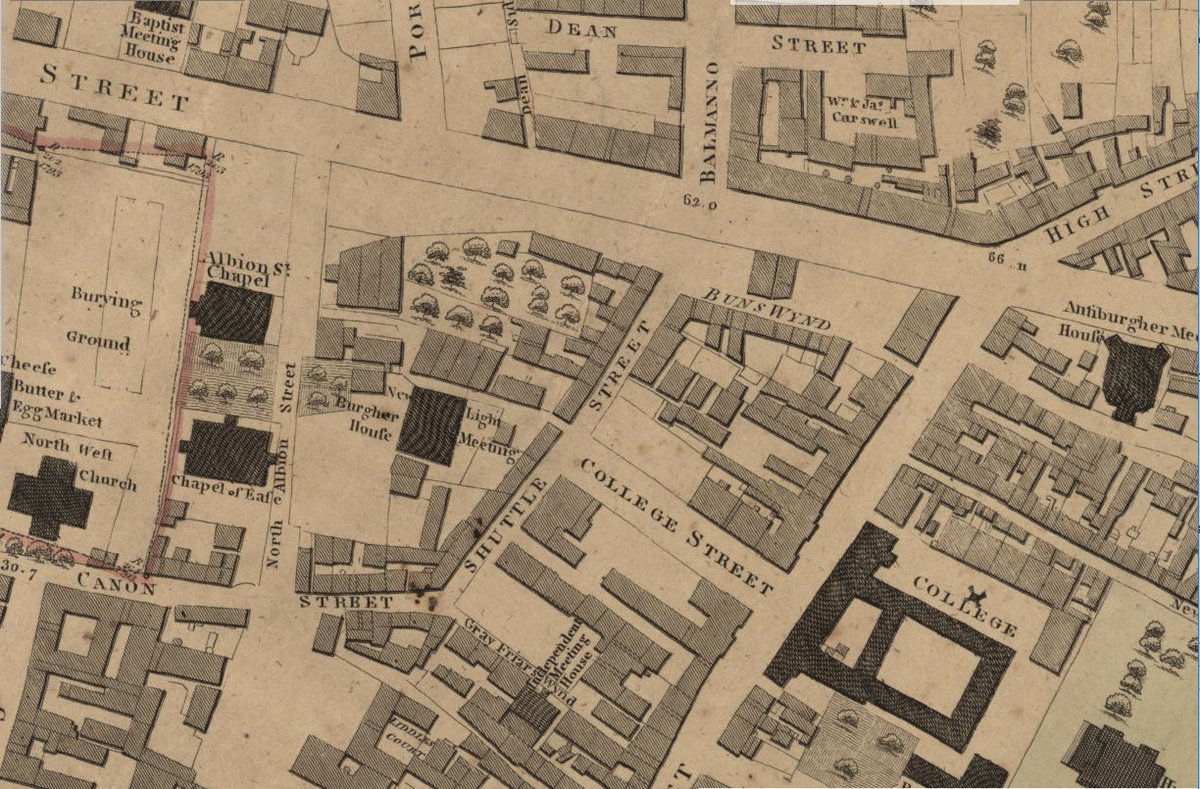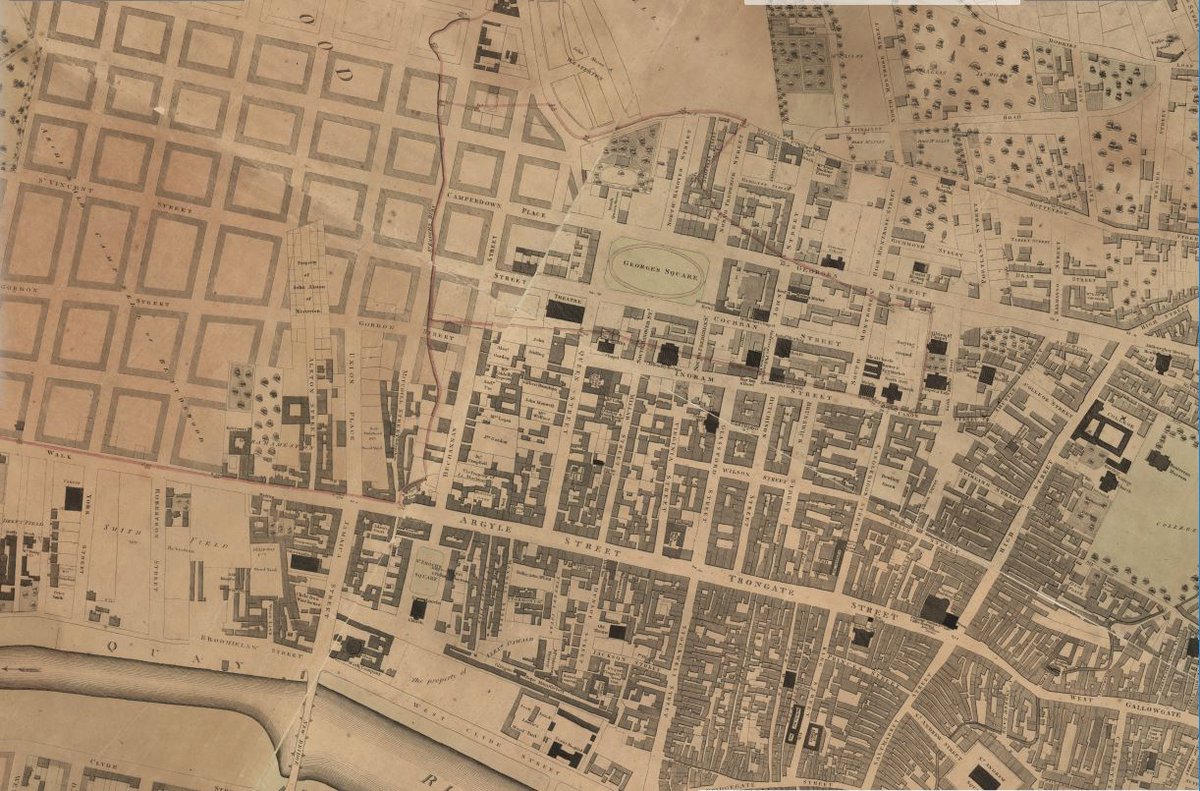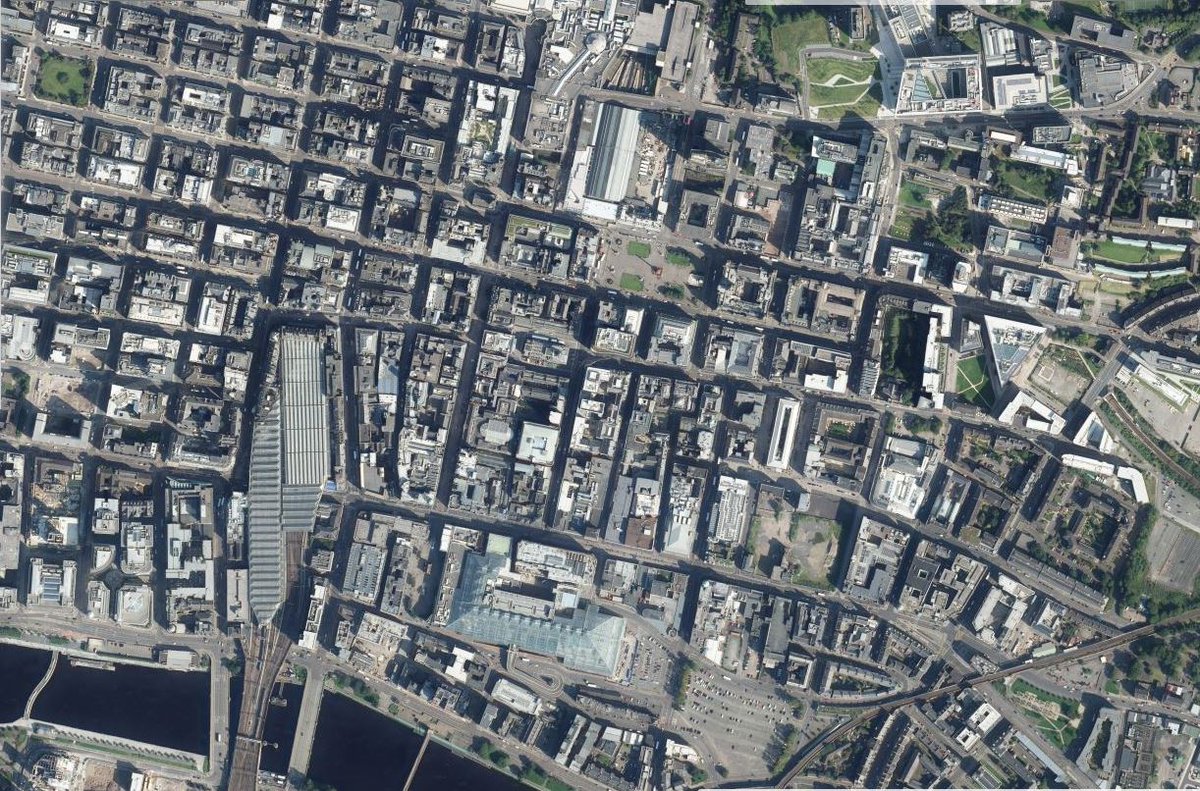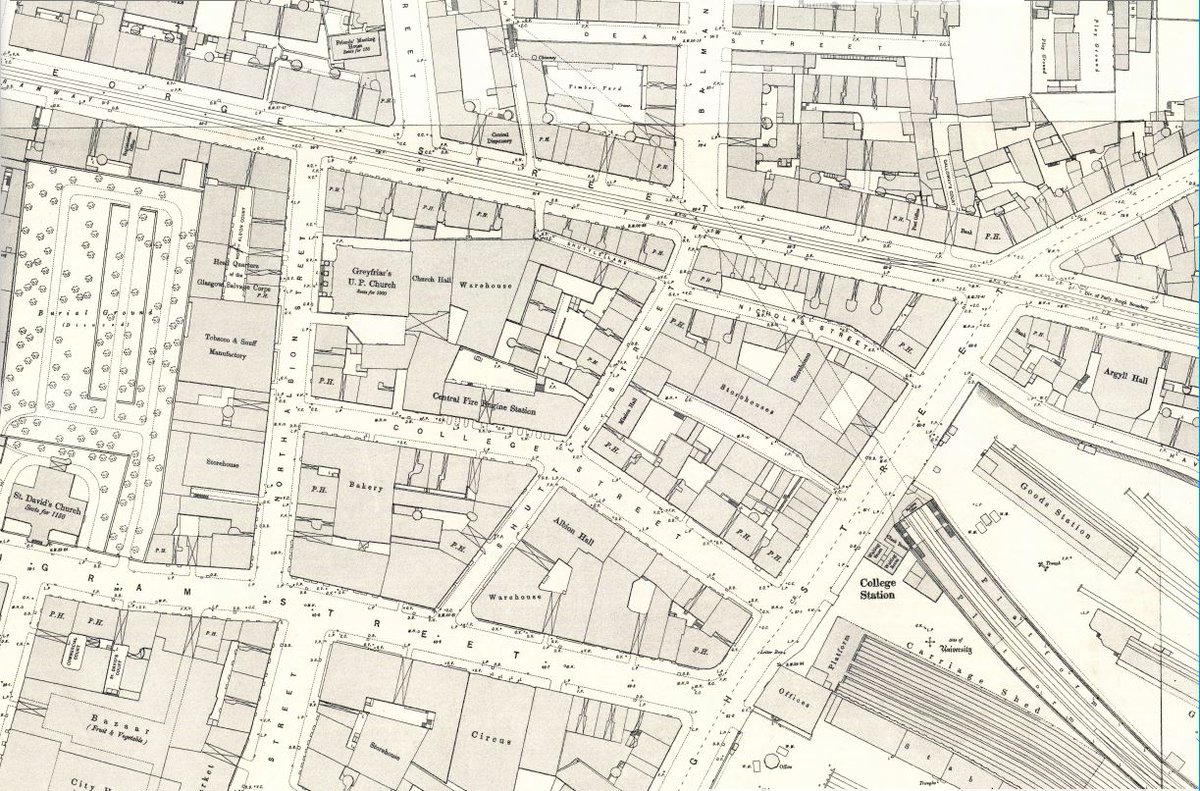A wee Sunday map thread...
This is not my favourite building.
It's the University of Strathclyde's Technology and Innovation Centre. It tries to be clever, and just manages to be bland and aggressive at the same time.
But it does tell a story about the growth of urban Glasgow.
This is not my favourite building.
It's the University of Strathclyde's Technology and Innovation Centre. It tries to be clever, and just manages to be bland and aggressive at the same time.
But it does tell a story about the growth of urban Glasgow.
Seen from above, the TIC's main feature is its triangular planform, which has drawn parallels with other fantasy buildings.
That planform is largely controlled by the acute angle between Shuttle St (to the east) and George St (to the north) which defines the site.
That planform is largely controlled by the acute angle between Shuttle St (to the east) and George St (to the north) which defines the site.
Where does that angle come from?
On McArthur's map of 1778, we see a street called Greyfriars Wynd, linking Canon Lane to Bun's Wynd.
Its orientation makes sense: parallel with High Street and linked to it by the narrow wynds and closes of the mediaeval city.
On McArthur's map of 1778, we see a street called Greyfriars Wynd, linking Canon Lane to Bun's Wynd.
Its orientation makes sense: parallel with High Street and linked to it by the narrow wynds and closes of the mediaeval city.
Greyfriars Wynd, in turn was named for the Franciscan monastery on this site, which later gave its name to Greyfriars U.P. Church on Albion Street [ https://www.theglasgowstory.com/image/?inum=TGSD00500] and Greyfriars School, marked here on the 1857 OS map.
Note what's happened just to the north...
Note what's happened just to the north...
Between McArthur's map of 1778 and Fleming's map of 1807, the picture had changed dramatically as George Street smashed through, demolishing the buildings on the north of Bun's Wynd.
Greyfriars Wynd, now Shuttle Street, remained, creating that acute angle that shapes the TIC.
Greyfriars Wynd, now Shuttle Street, remained, creating that acute angle that shapes the TIC.
The line of George Street, in turn, defined the alignment of Glasgow's famous grid plan as the growing industrial city spread westward.
Note the meandering course of Argyle St to the south, which reveals its age by the fact that it's still not quite true to the grid.
Note the meandering course of Argyle St to the south, which reveals its age by the fact that it's still not quite true to the grid.
As the years went by that grid invaded the mediaeval street plan. By 1892-4, Ingram St — now extended through the old route of Canon Lane — was making a slightly wobbly bid to run parallel to George St.
Somehow, in that packed streetscape, the line of Greyfriars Wynd survived.
Somehow, in that packed streetscape, the line of Greyfriars Wynd survived.
To summarise: the keystone of the so-called Innovation District is the shape it is because, two centuries ago, two eras of Glasgow's urban development met and didn't quite line up.
The early modern city, shaped by the mediaeval city, shapes us today.
/end
The early modern city, shaped by the mediaeval city, shapes us today.
/end

 Read on Twitter
Read on Twitter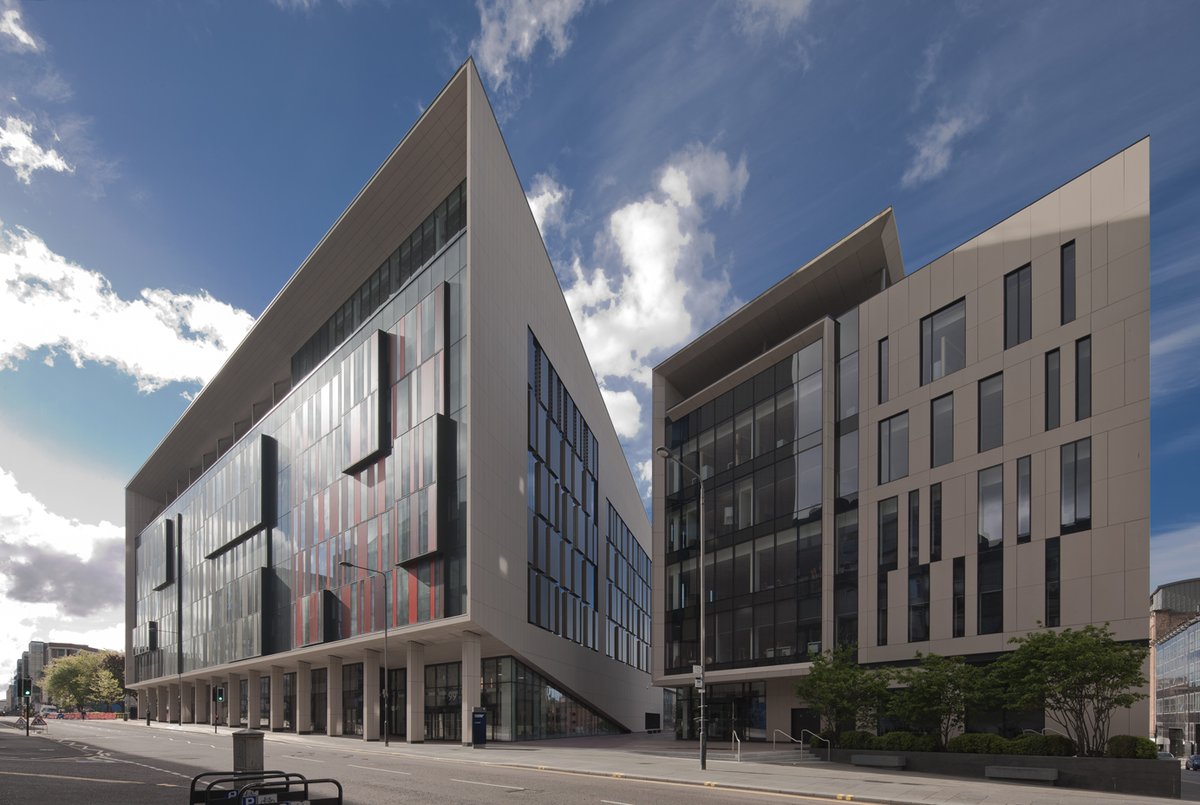
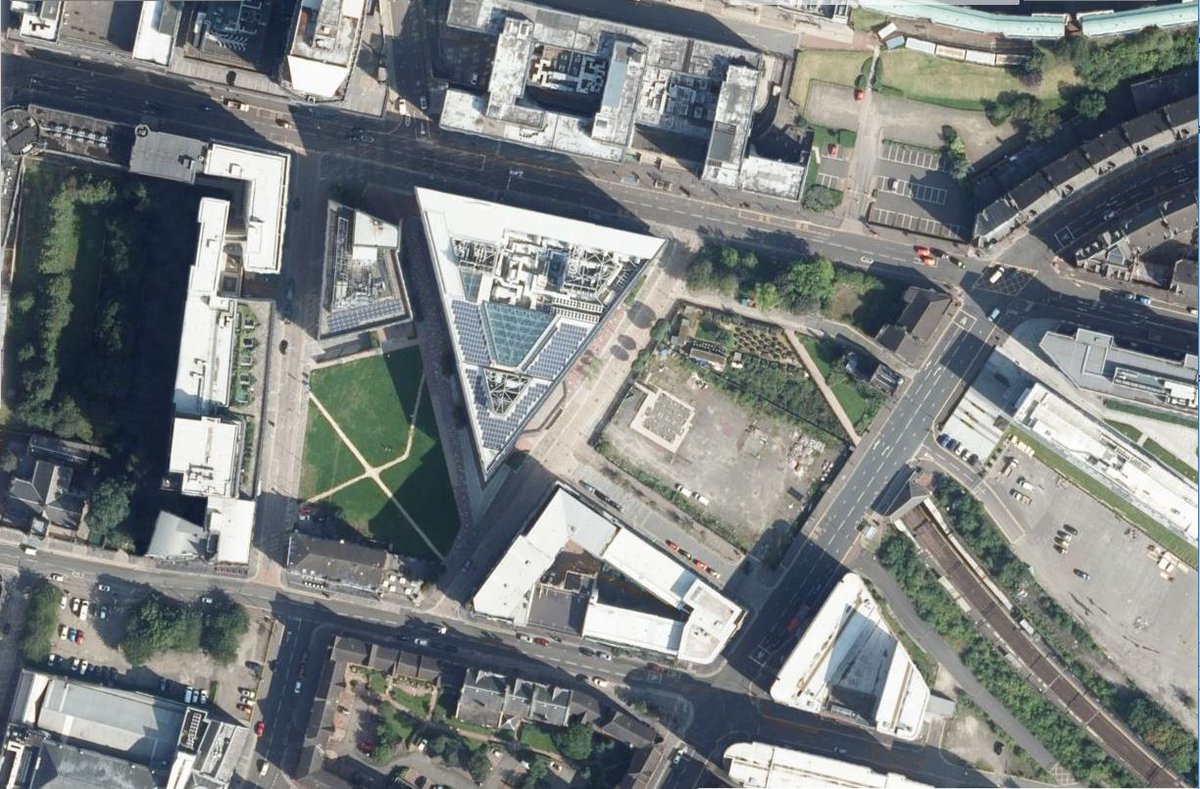

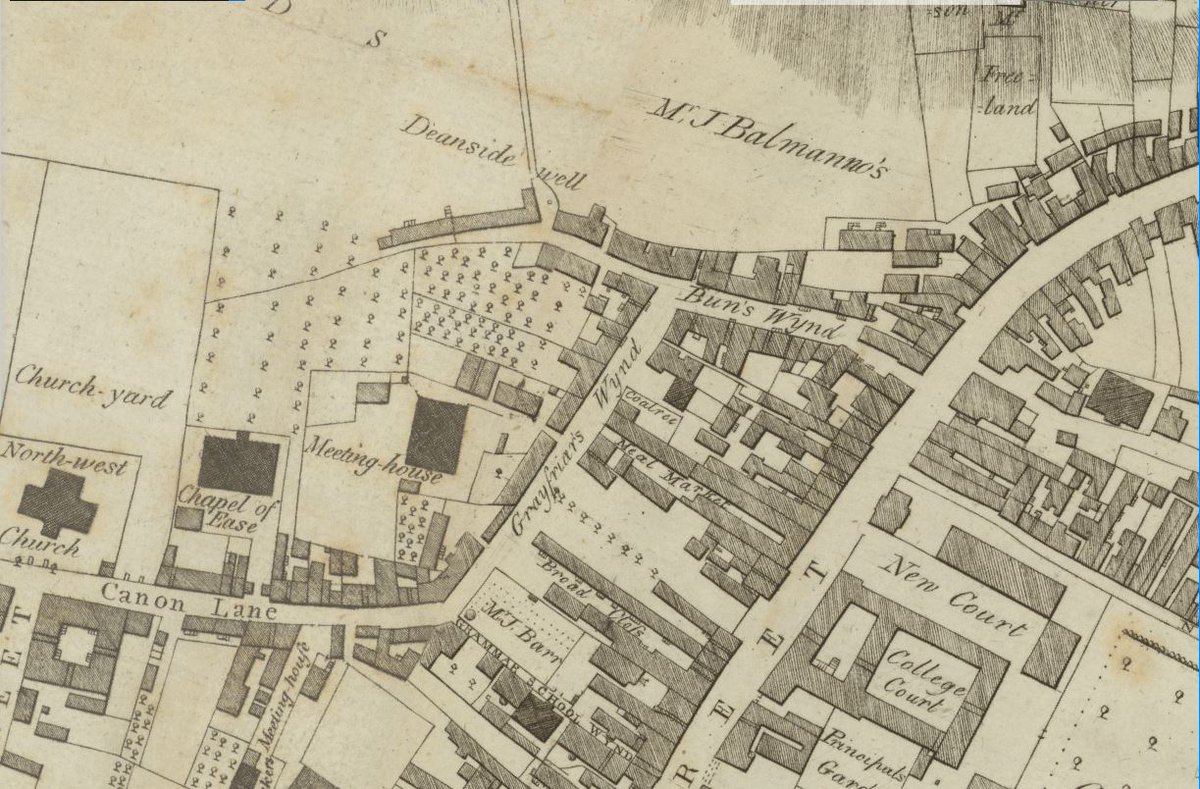
![Greyfriars Wynd, in turn was named for the Franciscan monastery on this site, which later gave its name to Greyfriars U.P. Church on Albion Street [ https://www.theglasgowstory.com/image/?inum=TGSD00500] and Greyfriars School, marked here on the 1857 OS map.Note what's happened just to the north... Greyfriars Wynd, in turn was named for the Franciscan monastery on this site, which later gave its name to Greyfriars U.P. Church on Albion Street [ https://www.theglasgowstory.com/image/?inum=TGSD00500] and Greyfriars School, marked here on the 1857 OS map.Note what's happened just to the north...](https://pbs.twimg.com/media/EsfPRzKXcAAXHQX.jpg)
